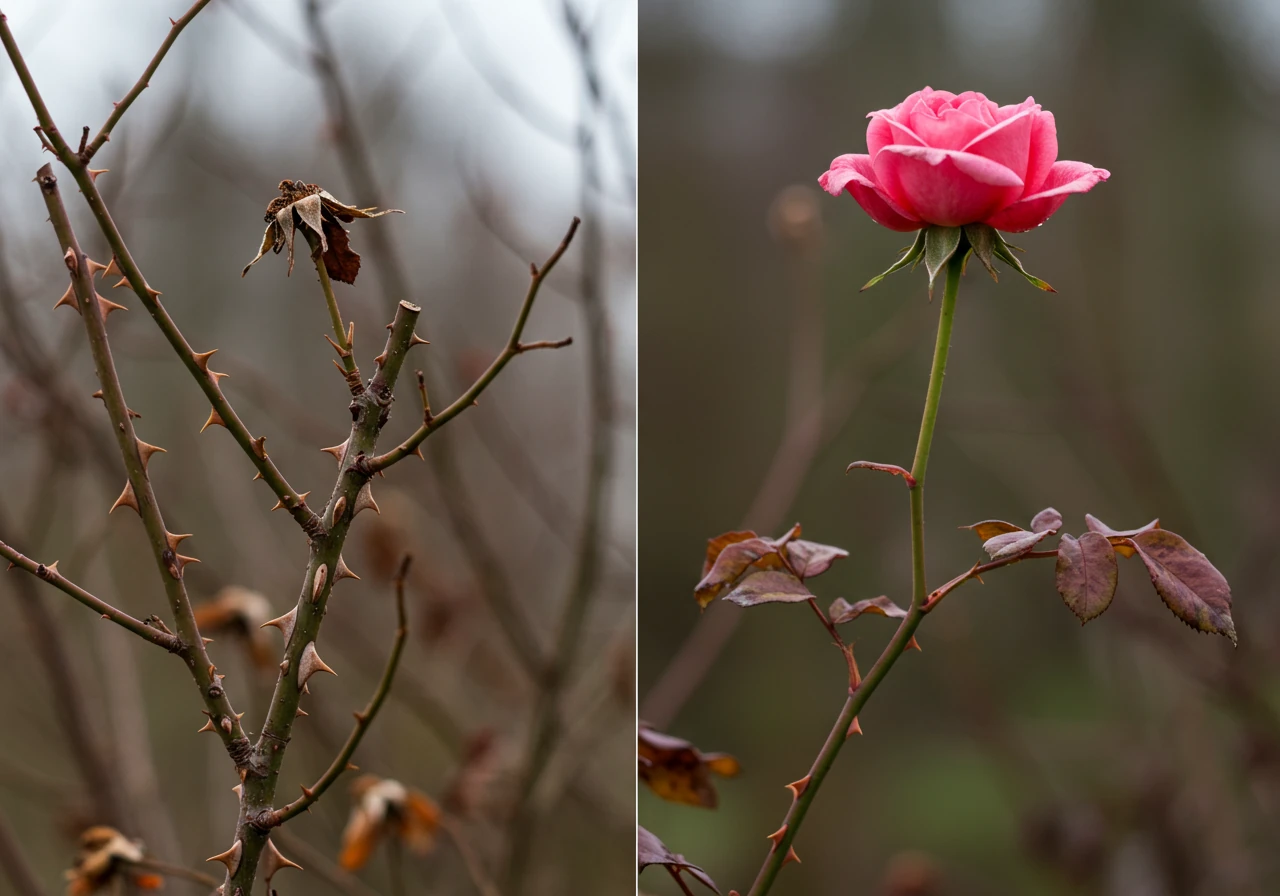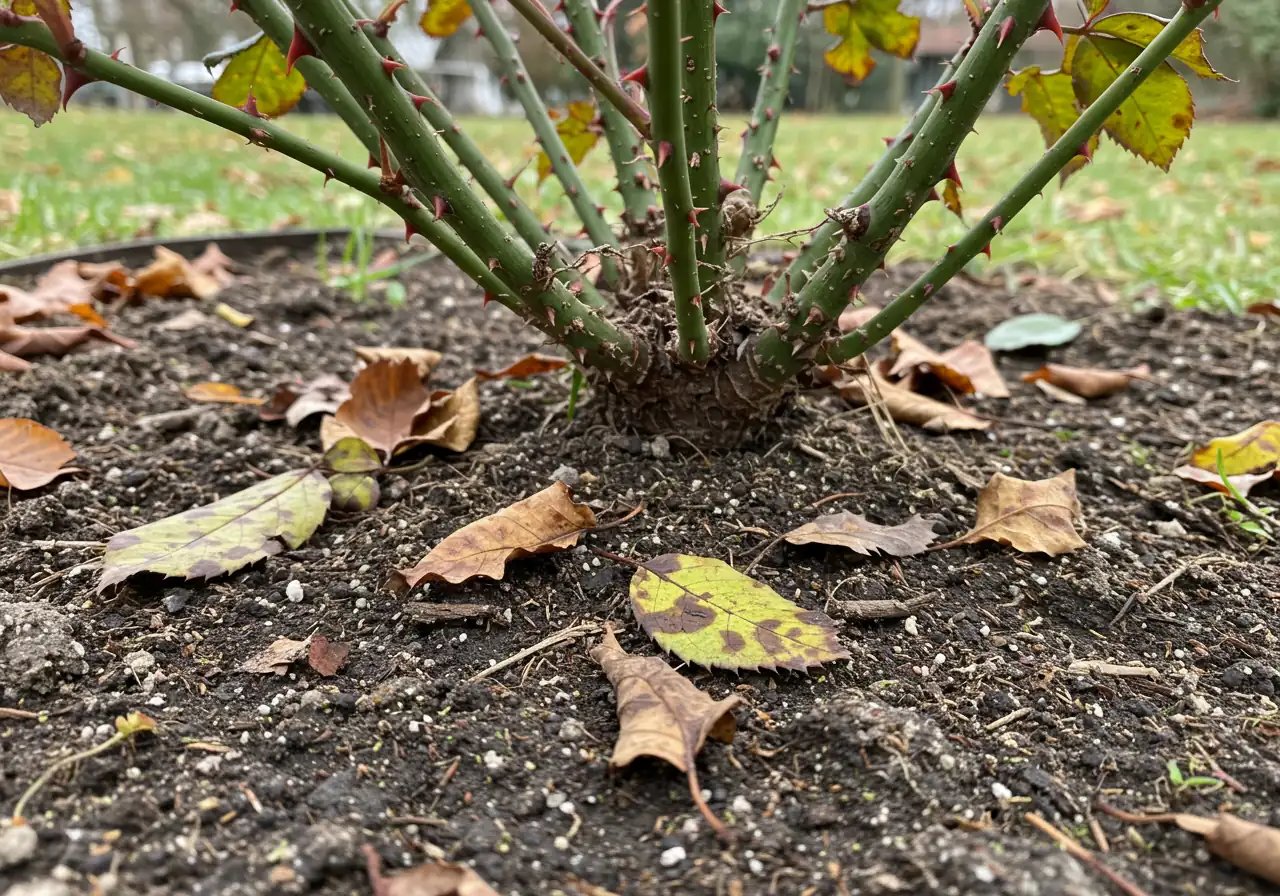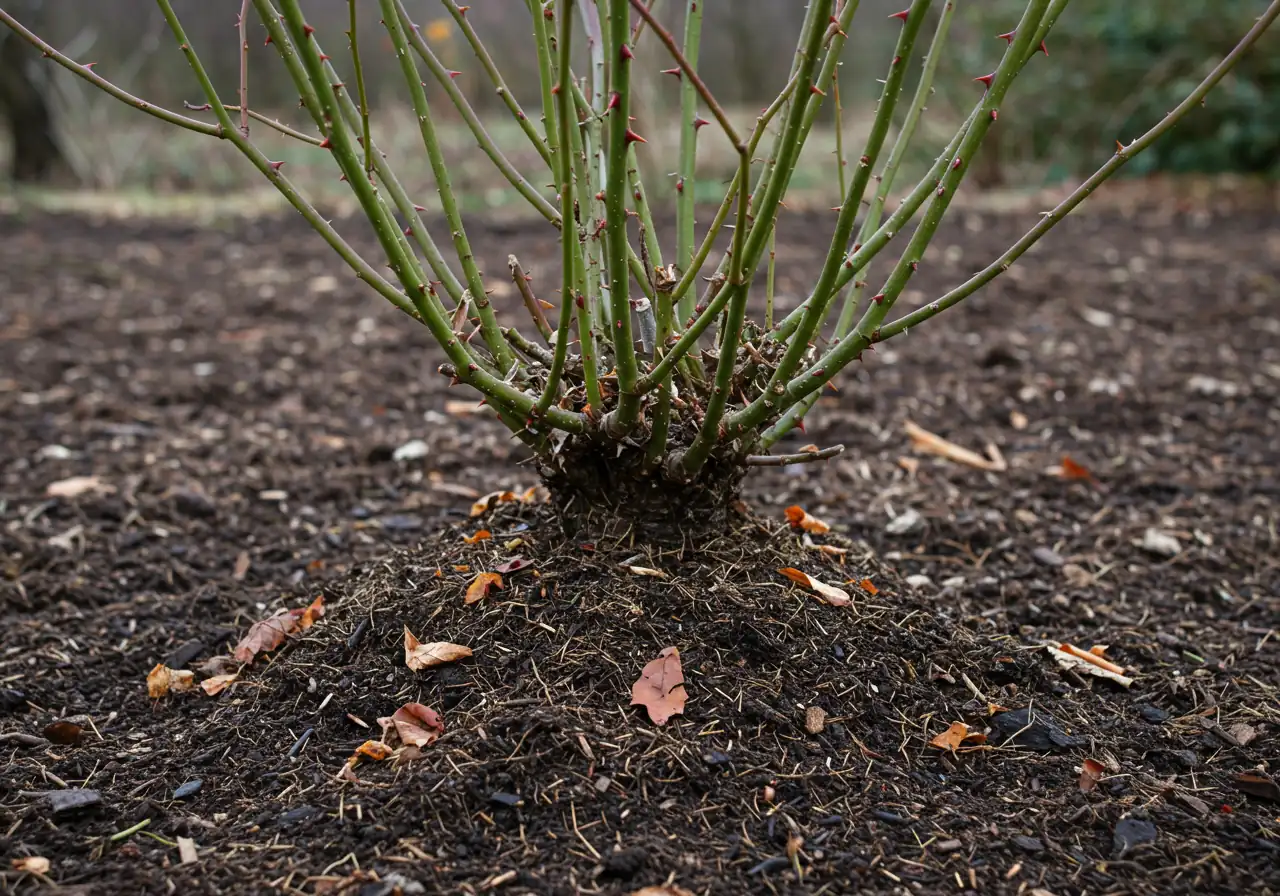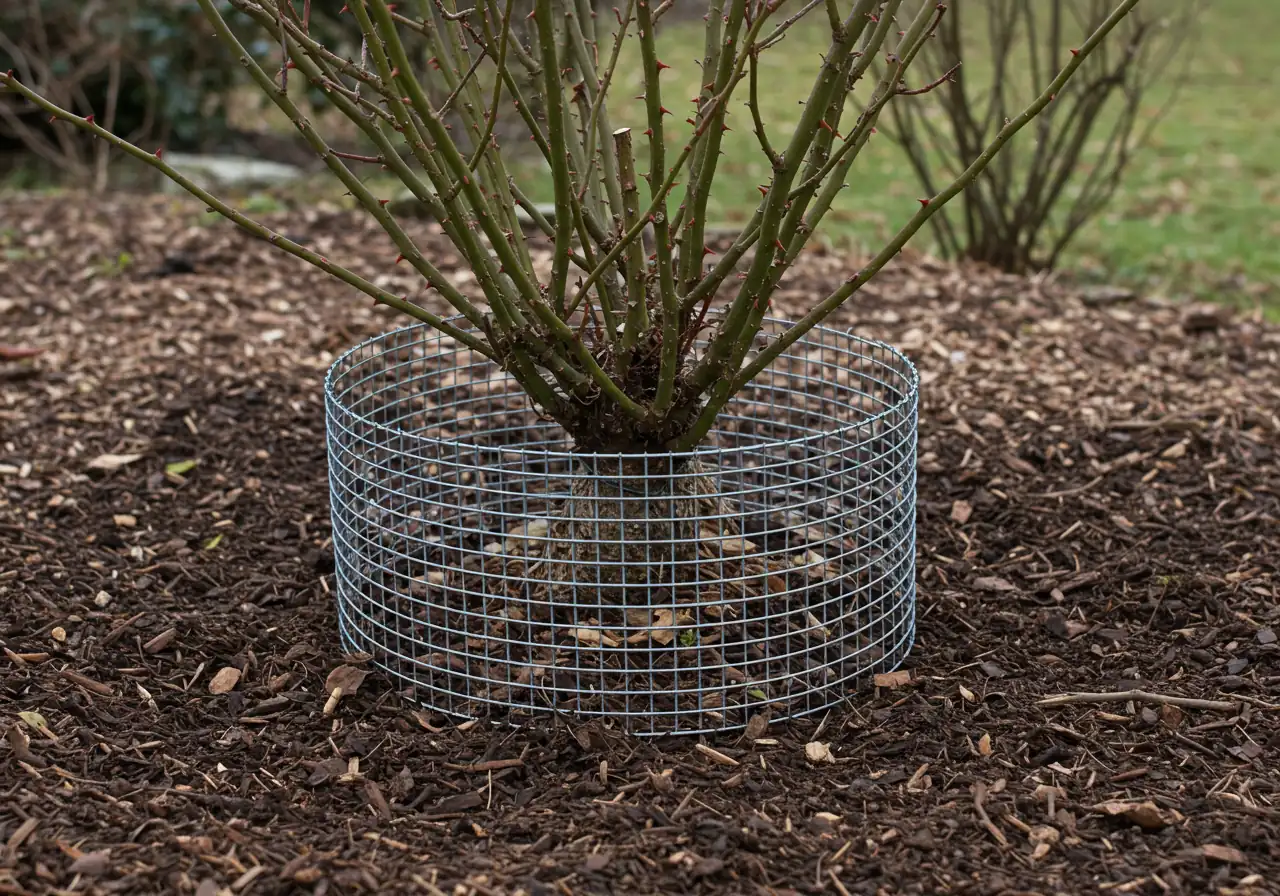Richmond Rose Winter Prep: Ensure Spring Survival
Quick Winter Prep Tips for Richmond Roses:
- Stop fertilizing by late August/early September.
- Clean up all fallen leaves and debris around roses in late fall.
- Perform minimal fall pruning: only remove dead, damaged, or diseased canes.
- After a few frosts but before ground freeze, mound soil/compost/shredded leaves 8-12 inches high around the base, covering the graft union on tender roses.
- Use hardware cloth barriers if rabbits or voles are a problem.
- Water adequately until the ground freezes.
Ensure your roses survive the Ottawa winter! Need professional help with garden prep?
Request Your Quote TodayAh, Richmond roses! Is there anything better than seeing those gorgeous blooms brightening up our yards from spring through fall? Whether you’re strolling through Richmond itself or visiting neighbours over in Manotick, vibrant roses are a staple of summer gardening joy. But let’s be honest, folks – then comes winter. And here in the Ottawa area, winter doesn’t exactly tiptoe in politely; it tends to arrive with icy winds, deep freezes, and enough snow to make even the hardiest gardener shiver.
That beautiful rose bush that gave you so much pleasure can quickly become vulnerable when the temperatures plummet. Without the right protection, our harsh Canadian climate can, quite literally, nip those future blooms right in the bud, potentially damaging or even killing your prized plants. Proper winter prep isn’t just a suggestion around here; it’s essential landscaping TLC for ensuring your roses survive the chill and burst back to life next spring. We provide reliable garden maintenance throughout the region.
Feeling a bit frosty about the task? Don’t worry! This guide will walk you through simple, effective steps to tuck your roses in safely for their long winter nap, covering everything from pruning tips to the best ways to insulate them from the cold. Let’s keep those Richmond roses ready to dazzle!
Know Your Roses, Know Your Enemy: Ottawa Winter vs. Your Garden Beauties
Alright, let’s talk turkey – or rather, roses and winter. Here in the Ottawa region, our winters are no joke for delicate garden plants. Think of it as a frosty face-off: your lovely roses versus Mother Nature’s icy stare. Understanding the specific challenges helps you plan your defence!

So, what exactly makes an Ottawa winter so tough on roses?
- Deep Freeze & Freeze-Thaw Cycles: Temperatures regularly plunge well below freezing, which can damage or kill canes (the woody stems). Worse still are those sneaky mid-winter thaws followed by snap freezes. This tricks the rose into thinking spring might be near, only to get zapped by returning cold, causing splits and damage. This kind of stress often leads to needing a serious .
- Drying Winds (Desiccation): Icy winds suck moisture right out of the exposed canes, especially when the ground is frozen solid, preventing the roots from replacing lost water. It’s like rose windburn!
- Heavy Snow Load: While snow can insulate, heavy, wet snow can snap canes, particularly on taller or climbing roses.
- Critter Damage: Sometimes, hungry critters like rabbits or voles might nibble on canes for a winter snack, especially when other food is scarce. Unlike specially chosen , many roses are quite appealing to wildlife. Reputable resources like the Ontario Ministry of Natural Resources offer information on managing rabbit populations.
Now, not all roses face winter equally. We generally group them into two camps:
- Hardy Roses: These tough cookies are bred for colder climates (like ours!). Think Canadian Explorer series, Parkland series, or Rugosa roses. They often survive winter with minimal fuss, maybe just needing a bit of mulch around the base.
- Tender Roses: These include many popular Hybrid Teas, Grandifloras, and Floribundas. They produce stunning flowers but are less tolerant of deep cold. Their graft union (the knobbly bit where the fancy rose is joined to hardy rootstock) is especially vulnerable and needs protection.
Local conditions matter, too. Much of our area, from established parts of Nepean to newer developments, deals with heavy clay soil. Clay holds moisture, which is great in summer but means it freezes solid and can lead to poor drainage and ice buildup around roots in winter. Microclimates also play a role. A rose in a sheltered Nepean backyard might fare better than one exposed to biting winds across open fields near Kars. While you’re assessing your yard’s microclimate and prepping roses, it’s also smart to check on other landscape elements. Before covering beds, ensure you know where wires are for things like to avoid damage. Even things unrelated to plants need attention; ensuring your prevents springtime surprises.
Here’s a quick comparison:
Rose Type Hardiness Snapshot:
| Rose Type | General Ottawa Hardiness | Typical Protection Needed |
|---|---|---|
| Explorer Series | Very Hardy | Minimal; mulch often sufficient |
| Parkland Series | Very Hardy | Minimal; mulch often sufficient |
| Rugosa Roses | Very Hardy | Usually none needed |
| Shrub Roses (Misc) | Varies widely | Check specific variety; often needs mulch |
| Hybrid Teas | Tender | Significant; hilling, covering required |
| Grandifloras | Tender | Significant; hilling, covering required |
| Floribundas | Tender | Significant; hilling, covering required |
| Climbing Roses | Varies (often Tender) | Often needs detaching & covering |
Knowing your specific rose type and understanding our local winter conditions are the first steps to successful overwintering. Don’t worry, the next sections will cover how to protect them! And if tackling winter prep feels overwhelming, remember that professional landscaping and garden maintenance services are available to help ensure your garden beauties survive the chill. Check out our Google My Business page for reviews!
The ‘Before the Snow Flies’ Rose Routine: Your Late Fall Checklist
Okay, garden warriors, the days are getting shorter, there’s a definite chill in the Ottawa air, and those gorgeous roses are winding down. It’s time for the “Before the Snow Flies” routine – that crucial late-fall checklist to help your beloved bushes survive the deep freeze and come back strong next spring. Think of it as tucking them in for a long winter’s nap! Ignoring this step is like sending them into a snowball fight wearing only a swimsuit – not recommended!

Here’s your late fall rose care game plan, typically tackled from mid-October through November, after a few light frosts have kissed the garden but before the ground freezes solid like a forgotten freezie at the back of the chest freezer.
Your Late Fall Rose Checklist:
-
Cease the Fertilizer Feast (Around late August/early September):
- Why? We want our roses to slow down and harden off for winter, not push out tender new leaves and stems that will just get zapped by the cold. Think of it as telling them, “Okay kids, playtime’s over, time to get ready for bed.” Feeding them late encourages vulnerable growth.
-
Keep Watering (Until Ground Freeze):
- Why? This might seem odd, but roots need moisture to survive the drying winter winds, even when dormant. Water deeply once a week if we aren’t getting rain, right up until the ground freezes solid. Avoid soggy soil, though – we don’t want frozen feet!
-
Stop Deadheading (Around early-to-mid October):
- Why? Letting the spent flowers develop into rose hips (those little seed pods) sends a hormonal signal to the plant that says, “Season’s over, time to shut down production.” It’s nature’s snooze button.
-
The Big Clean-Up (Mid-to-late Fall): This is super important!
- Why? Fallen leaves, dead twigs, and old mulch can harbor fungal diseases (like black spot – ugh!) and insect eggs over winter. Leaving this debris is like rolling out the welcome mat for problems next spring. A clean bed is a healthy bed.
- How:
- Gently rake away all fallen rose leaves and any other debris from around the base of your plants. Get right in there!
- Look for and prune out any obviously dead, damaged, or diseased canes (stems). Don’t do major shaping now – save that for spring. Just remove the bad stuff. Use clean, sharp pruners.
- Weed Warrior Duty: Yank out any weeds that have snuck in. They compete for resources and can also shelter pests.
- Eco-Tip: Compost healthy leaves and stems if you have a hot compost system. However, definitely bag up and put any diseased leaves or canes in the garbage – don’t compost them, as the spores might survive and reinfect next year. Proper disposal is key! This meticulous tidying is a core part of good garden hygiene, whether you’re in Richmond or out near Metcalfe. If the task feels overwhelming, remember there are dedicated services like the Metcalf garden clean up service available. A thorough fall clean-up also sets the stage for effective winter soil preparation techniques like adding mulch or compost after cleaning.
- Consider Surrounding Areas: While you’re focused on the roses, take a quick look around. Is the lawn nearby looking sparse and sad? A healthy lawn complements beautiful garden beds. While fall isn’t ideal for starting from scratch, if your lawn needs a complete overhaul next year, you might start researching options like professional sod installation services to achieve that lush green backdrop for your blooming roses next summer.
Getting this checklist done is a fantastic investment in next year’s blooms. It might seem like a bit of work now, especially if you have several rose bushes, perhaps lining a walkway in Barrhaven, but future you will be so grateful! If the thought of wrestling with thorny canes and heaps of leaves in the cold isn’t appealing, don’t hesitate to look into professional landscaping and garden maintenance services. Whether it’s comprehensive help or just tackling the big tasks like a Richmond garden clean up service, getting assistance can ensure your roses are perfectly prepped for their frosty farewell to fall.
The Pruning Puzzle: Snipping for Survival in Ottawa’s Climate
Okay, let’s solve the pruning puzzle! When it comes to snipping your roses before winter here in the Ottawa area, the golden rule is: less is more. Unlike the major reshaping you might do in spring, fall pruning is really just about damage control and a bit of tidying up for survival. Think of it as a light trim, not a full haircut!
Why the gentle approach? Aggressive fall pruning can stimulate new growth, which is exactly what we don’t want right before a deep freeze. Those tender new shoots haven’t had time to harden off and will be easily killed by the cold, potentially weakening the whole plant. Our main goal now is to prepare the rose for its winter blanket, not encourage a growth spurt.
So, what should you snip? Focus on the “3 D’s”:
- Dead: Cut out any canes that are clearly dead, dry, and brittle. They’re doing no good and can harbour disease.
- Damaged: Remove canes that are broken, cracked, or badly scraped. Wind or clumsy gardening moments happen!
- Diseased: Prune out any stems showing obvious signs of disease like black spot or powdery mildew, making sure to cut well below the affected area.
Tool Hygiene is Key! Before you start, and especially when moving between plants or cutting diseased wood, wipe your pruner blades with rubbing alcohol or a bleach solution (1 part bleach to 9 parts water). This prevents spreading problems around your garden like unwanted gossip. Clean tools make clean cuts, which heal faster.
For most roses, including those tough hardy varieties often seen thriving in areas like Greely, the 3 D’s might be all the fall pruning needed. However, for taller, more tender roses (like some Hybrid Teas or Grandifloras), you might also need to slightly reduce their height. Cut back long, whippy canes to about knee-to-waist height (roughly 2-3 feet). This isn’t for shaping, but purely to prevent them from whipping around violently in winter winds or snapping under heavy snow loads. Leave the detailed shaping for spring when you can see the extent of any winter damage and encourage vigorous new growth. Remember to allow rose hips to form; they signal the plant it’s time to rest.
Dealing with the pruned branches and other fall debris? Proper disposal is important. If you’re undertaking a larger fall cleanup that includes leaf removal and pruning, specialized services like a local Marionville yard clean up service or the Metcalf yard clean up service mentioned previously can handle the waste effectively. Keeping the garden bed tidy also helps prevent pests from finding cozy winter homes near your roses and ensures the area around your prized plants looks neat, complementing adjacent areas perhaps maintained with services like expert sod installation for a perfect lawn edge.
For a visual idea of what healthy, well-maintained roses and gardens look like heading into or coming out of winter, you can always browse through examples in our landscaping project photo gallery. And remember, if you hire professionals for pruning or other garden tasks, it’s always wise to understand the scope of work, typically outlined in their service agreement or standard terms and conditions for landscaping services. For more gardening tips, check out resources like the Ottawa Horticultural Society.
Fall Pruning vs. Spring Pruning: DOs and DON’Ts
| Feature | Fall Pruning (Late October/November) | Spring Pruning (After last hard frost, buds swelling) |
|---|---|---|
| Goal | Survival: Remove 3 D’s, reduce wind/snow risk slightly. | Shape, Rejuvenate: Remove winter damage, encourage growth. |
| Severity | Minimal / Light | Moderate to Heavy (depending on rose type) |
| DO: | Remove dead, damaged, diseased canes. Clean tools. | Remove dead/damaged wood. Shape the plant. Cut to outward bud. |
| DO: | Slightly shorten very tall canes if needed. | Select strong canes, remove weak/crossing ones. |
| DON’T: | Perform major shaping or heavy reduction. | Prune too early (risk frost damage). |
| DON’T: | Stimulate new growth before freezing temps. | Be afraid to cut back significantly (for most types). |
| Focus On: | Protection & Disease Prevention | Structure & Encouraging Blooms |
So, keep those fall snips minimal and focused! Your roses will thank you by surviving Ottawa’s winter chill and being ready for their proper spring makeover.
Tuck ‘Em In Tight: Mounding and Mulching
This is the cornerstone of rose winter protection in Ottawa, especially for tender varieties. It involves creating an insulating layer around the base of the rose.

- Why: Insulates the vulnerable graft union and lowest buds from freeze-thaw cycles and deep cold. Reduces moisture loss.
- When: After a few hard frosts, but before the ground freezes solid (Late Oct – Nov/Early Dec).
- How: Gently pile loose soil, compost, or (best!) shredded leaves 8-12 inches high around the base. Ensure the graft union is buried. Keep the material loose.
- Materials: Good = Soil/Compost mix. Better = Shredded leaves (oak are great). Avoid = Heavy clay, whole leaves, peat moss, diseased leaves.
- Climbers: Tender climbers may need canes detached, gently bent to the ground, and covered with the mounding material.
Mounding is essential and often sufficient for many roses. Consider this the minimum protection for tender types. This is a key part of our Ottawa garden clean up service. Existing clients can manage services via our customer portal. Your positive feedback on our estimate feedback form motivates us!
Beyond the Basics: Rose Cones
Styrofoam cones are a quick option but come with risks in our climate.
- Idea: Cover slips over pruned rose.
- Pros: Easy, neat appearance.
- Cons (Significant in Ottawa): Can overheat like a greenhouse on sunny days, causing drastic temperature swings. Poor air circulation traps moisture, encouraging fungal disease. Can blow away if not anchored.
- If Used: MUST be well-ventilated (poke holes). Anchor securely. Best for very delicate roses in locations without direct winter sun.
Generally, mounding or burlap is preferred over cones in the Ottawa region due to the potential for overheating and moisture issues.
Beyond the Basics: Burlap Wraps
Wrapping canes with burlap offers breathable protection.
- Idea: Wrap canes (often with insulation like straw/leaves inside) with burlap fabric.
- Pros: Breathable (reduces overheating/moisture), flexible, can create windbreaks, reusable.
- Cons: More labour-intensive than mounding or cones. Often requires building a stake frame first. Insulating fill is recommended. Burlap shouldn’t touch canes directly if wet.
- How: Build a frame slightly larger than the rose. Wrap burlap around stakes. Loosely fill space between burlap and canes with straw or shredded leaves.
Burlap wrapping requires more effort but provides excellent, breathable protection, especially when combined with mounding. View examples in our garden transformations gallery.
Beyond the Basics: Critter Control
Protecting your mounded roses from hungry rabbits and voles is crucial.

- Best Defense: Physical barriers. After mounding, place a cylinder of hardware cloth (wire mesh with small squares, ¼ inch mesh is good for voles) around the base.
- Height/Depth: At least 18-24 inches tall for rabbits. Bury the bottom edge a couple of inches into the mound/soil to deter voles.
- Cleanliness: Keep the surrounding area tidy. Remove brush piles and tall weeds that provide shelter. This is part of a good property clean up. Check our services for Metcalf and Marionville property cleanup.
- Repellents: Can be used but effectiveness varies in winter and requires reapplication. Barriers are more reliable.
Don’t let critters undo your hard work! A simple wire mesh cylinder is often the best investment against winter munching.
Rose Winter Prep Timeline (Approximate for Ottawa Area)
Late Aug / Early Sept
Stop all fertilizing to allow roses to begin hardening off for winter.
Early / Mid Oct
Stop deadheading. Let rose hips form to signal dormancy.
Mid Oct – Mid Nov (After first light frosts)
Perform the ‘Big Clean-Up’: remove all fallen leaves, debris, and weeds. Do minimal pruning (3 D’s only).
Late Oct – Early Dec (After hard frosts, before ground freeze)
Mound roses with soil/compost/shredded leaves. Install critter barriers if needed. Apply burlap wraps if desired.
Throughout Winter
Monitor for critter damage. Gently brush off very heavy snow if canes seem stressed. Check that protection remains secure after storms.
Early Spring (After snow melt, ground thaws)
Gradually remove winter protection (mounds, wraps) as temperatures consistently stay above freezing. Wait for major pruning until buds swell.
Beyond the Basics: Extra Protection and Critter Control
Okay, so you’ve mastered the mounding and mulching basics – fantastic! But sometimes, especially for those extra-special or particularly vulnerable roses, or if you’re dealing with tiny terrors of the furry kind, you might need to call in the reinforcements. We covered cones, burlap, and critter barriers in the tabs above, but let’s recap the comparison.
Remember those tough Canadian Explorer or Parkland roses, maybe thriving in your Barrhaven backyard? Often, these hardy varieties laugh in the face of winter (okay, maybe not laugh, but they tolerate it well). For these champs, the basic mounding and mulching is usually plenty. Over-protecting hardy roses can sometimes do more harm than good by trapping too much moisture.
Quick Comparison: Winter Protection Methods
| Method | Pros | Cons | Ottawa Climate Notes |
|---|---|---|---|
| Mounding/Mulch | Simple, effective, improves soil | Can settle, requires material | Standard practice, very effective |
| Rose Cones | Easy to place, neat look | *High risk of overheating/moisture*, brittle, needs anchoring | Use cautiously; ventilation is crucial |
| Burlap Wrap | Good airflow, flexible shape, reusable | Fiddly, needs frame/filling for best insulation | Good choice, especially with leaf filling |
| Hardware Cloth | Excellent critter protection | Cost, setup time | Highly recommended if critters are a problem |
| No Protection | Easy! | High risk for tender types, moderate risk for others | Only for *very* hardy, proven varieties |
Choosing the right extra protection depends on your specific roses, your location’s microclimate, and whether furry neighbours see your garden as an all-you-can-eat snack bar. If you’re ever unsure about the best approach for your garden, remember that professional help is available. Our comprehensive Ottawa yard cleanup service can include tailored winter protection strategies. Contact us through our contact page or learn more about us and our commitment to quality.
Estimated Winter Damage Risk by Protection Level (Ottawa Climate)
Note: Chart shows illustrative risk percentages for typical Ottawa winters. Actual results vary based on rose type, specific weather, and proper application of protection.
Highlight Box: Your 5-Minute Rose Winterizing Wins!
Okay, maybe not *literally* five minutes (unless you have just one super cooperative rose!), but these are the absolute *must-do* steps to give your Ottawa roses the best shot at surviving winter. Think of this as your speedy checklist for happy spring blooms – no PhD in landscaping required!
- 1. Clean Sweep: Seriously, get those fallen leaves and dead bits outta there! They’re like cozy condos for disease spores and pests just waiting for spring. Rake thoroughly around the base of each rose. Proper sanitation is your first line of defence. If the leaf situation across your entire property is looking more like a full-blown invasion, getting professional help, such as the Marionville property cleanup service, can save you hours.
- 2. Snip Snip (Lightly!): Resist the urge for a major haircut! In late fall, only prune out the obvious “3 D’s”: Dead, Damaged, or Diseased canes. Leave the serious shaping for spring. Cutting too much now can encourage tender growth that Old Man Winter will just zap.
- 3. Mound Magic: This is crucial, especially for tender roses often grown in Barrhaven gardens. After a few frosts but before the ground freezes solid, pile loose soil, compost, or (our favourite!) shredded leaves into a mound about 8-12 inches high around the base of the plant. Make sure the knobbly graft union (on grafted roses) is buried. This insulates the roots and lowest buds from harsh freeze-thaw cycles. It’s a focused application of protective ground cover principles, somewhat related to how good mulching and edging protects garden beds.
- 4. Fence ‘Em Out (If Needed): Got bunnies or voles eyeing your roses like a winter snack bar? After mounding, place a cylinder of hardware cloth (wire mesh) around the base, extending a bit below the mound surface. Keeping the broader yard tidy also discourages critters; if your whole space needs attention, a comprehensive approach like the Metcalf property cleanup service can help reduce potential habitats.
- 5. Final Tidy & Disposal: Once mounded and protected, do one last check. Ensure the surrounding garden bed is clean. Bag up any diseased leaves or canes you pruned – don’t compost them, as diseases can survive. Proper removal of potentially harmful debris is a key part of thorough garden care, like that offered by a specific Marionville garden clean up service.
Tackle these quick wins, and you’ll be giving your roses a fighting chance against the Ottawa winter chill! Sweet dreams, little roses!
FAQ: Your Richmond & Ottawa Rose Winter Worries Answered
Ideally, you want to mound your roses *after* a few good frosts have signalled dormancy, but *before* the ground freezes solid – usually late November or early December here in Ottawa. Waiting until the ground is rock hard makes mounding impossible. If you’ve missed the window, focus on preventing windburn with burlap screens if possible, and hope for good snow cover! Check our privacy policy for site usage details.
Don’t panic just yet! While mounding is best, especially for tender types, it’s too late now. Piling loose snow *gently* around the base can offer some insulation if we get enough. Mainly, cross your fingers and be prepared for potential winter damage come spring. If losses are heavy, planning for new flower bed installations might be needed next year. You can always book an estimate for recovery work.
Honestly, they’re risky business in Ottawa. Rose cones can heat up too much on sunny winter days, causing damaging freeze-thaw cycles inside, and they trap moisture. If you *must* use one, ensure it’s well-ventilated (poke holes!) and maybe opt for burlap instead. Making smart choices during garden material selection for Ottawa weather is key for success. Our thank you page often features seasonal tips.
You’re right, those hardy Canadian-bred roses are tough cookies! Often, they only need minimal help. A simple mound of soil or shredded leaves still offers extra insurance against really harsh freezes or freeze-thaw cycles, protecting the lowest buds. Plus, keeping the surrounding area tidy with good fall lawn care practices reduces places for pests to overwinter near your roses.
Snow is a fantastic insulator – *when* it arrives early and stays consistently deep all winter. But that’s a gamble! An early deep freeze before snowfall, or mid-winter thaws that melt the snow cover, can leave unprotected roses vulnerable. Mounding provides reliable base protection *before* the snow even flies. A good fall cleanup, maybe using an Ottawa property cleanup service, ensures there isn’t debris trapping ice around the base before snow arrives.
Two common goof-ups: Pruning too hard in the fall (stimulates vulnerable new growth) and not cleaning up fallen leaves (invites diseases like black spot). Remember, fall pruning is just light tidying – save the major haircut for spring! Also, don’t fertilize late in the season. Let your roses wind down naturally for their winter sleep.
Conclusion: Sweet Dreams, Roses! Waking Up to Spring Beauty (With a Little Help)
Phew! We’ve navigated the frosty path of winter rose care together. From that crucial late fall clean-up (banish those pesky disease spores!) and the “less is more” approach to pruning, to the essential step of tucking your roses in with a protective mound, you’re now equipped to help your garden stars survive Ottawa’s chilly embrace. Remember, this isn’t just fussy gardening; it’s a smart investment in next year’s glorious blooms, ensuring vibrant colour returns to your landscape whether you’re in Richmond, Russell, or Osgoode. Skipping winter prep here is like trying to skate on the Rideau Canal in July – it just doesn’t work!
Taking these steps helps prevent heartbreak come springtime, ensuring your roses wake up healthy and ready to grow, rather than damaged or worse. Think of the stunning display you’ll enjoy! If tackling the mounding, wrapping, or final garden clean up feels like too much as the cold sets in, don’t hesitate to call in the cavalry. Professional landscaping maintenance services can expertly handle winterizing tasks, ensuring everything is done just right for roses in Metcalfe, Kars, Embrun, and across the region. You can find details about our Metcalfe services or Marionville garden cleanup on our site.
So, give your roses the best chance for sweet dreams this winter. A little effort now promises a truly beautiful awakening next spring!
Ready to ensure your entire garden is winter-ready?
Book Your Winter Prep Estimate Now
